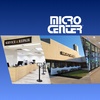{shortcode-08c0f8f43200bdb55affcd5ab147f032bee3bf55}
Nearly two months after the Feb. 7 executive order from the National Institutes of Health attempting to slash overhead funding, uncertainty persists surrounding the University’s future of research — and how that future will be funded.
Harvard received more than $488 million from the NIH in grants in fiscal year 2024, nearly one third of which covers indirect expenses. Harvard’s indirect cost rate — the percent of federal funding that covers administrative costs of research — is currently 69 percent, the largest of any Ivy League school.
But Trump’s proposed 15 percent cap, which has been temporarily blocked by a federal judge, would drop that number to $31 million.
As the 77 percent decrease to Harvard’s indirect cost expenses has put research in jeopardy, Harvard’s unusually high indirect cost rate raises questions about how the rate itself is calculated. According to experts, the rate reflects the University’s large operating expenses to maintain research facilities.
Calculating Indirect Costs
These overhead costs are not directly labeled under a specific research project, instead covering broader costs associated with research. According to former Harvard Medical School Dean Jeffrey S. Flier, this can be anything from heat, electricity, security, rent, and more. Oversight teams like the Institutional Review Board, which is responsible for approving any studies involving human subjects, is also funded by indirect costs.
“That doesn’t mean that it’s not being used for research,” Flier said. “It just means that it isn’t booked that way.”
Indirect costs are negotiated every few years between the University and the Department of Health and Human Services, currently run by Robert F. Kennedy Jr. ’76. The University regularly submits a “package” of financial information before funding is awarded.
“You have to submit the information that they request that relates to the costs that they view as allowable for indirect cost calculations — the space that goes on for research, the costs of maintaining the space, the various special services, the administrative costs, you know, all those things,” said Flier.
Marc Bucalo — CEO of Massachusetts consulting company g2 Consultant, Inc., which specializes in indirect cost rate analysis — said the information is carefully scrutinized after it is submitted.
“Sometimes there’s gray areas — they may question something and how you’re treating a certain cost,” Becalo said.
“That’s where that negotiation comes in,” he added. “How do we interpret the regulations? How are we, as the university, positioning ourselves against what the cost negotiator is saying, right? And you eventually come to an agreed-upon rate.”
Rate Negotiation
Harvard’s current rate is 69 percent — meaning for every dollar spent on research, 69 cents is allocated toward indirect costs. Universities typically have a rate between 40-60 percent, Bucalo said, meaning Harvard has a higher rate than average, something Flier attributes to the wildly varying costs each institution faces for their research.
“Not every institution has the same costs of research, right?” Flier said. “There are some who invest more in research than others. So you would think there would be different recovery rates for indirect costs.”
Bucalo emphasized that rates are dependent on individual institution’s size and operating costs.
“I don’t think you really can compare one rate to another, without really understanding how the organization is structured,” Bucalo said.
“Indirect costs include constructing and maintaining state-of-the-art facilities required to meet the current technical requirements of advanced research, as well as the procurement and maintenance of equipment necessary to conduct such research” John H. Shaw, Harvard Vice Provost for Research, wrote in a February declaration in support of the cap being blocked in court.
“Without this equipment, we cannot conduct the research,” he added.
According to a September 2013 report from the U.S. Government Accountability Office, in 2012, the 50 universities that received most indirect cost reimbursements were universities with the largest research programs.
And while indirect cost rates varied from 46.5 to 69.5 percent among these top 50 universities, the highest indirect cost rates were for privately owned universities and those located in high-cost-of-living areas.
Seven of the ten universities with the highest indirect costs were located in either New York or Boston, locations with higher-than-average costs of living.
According to Harvard’s FY24 financial overview, Harvard’s total operating expense increased by nine percent to $6.4 billion. The report attributed the growth to “high compensation costs, increased spending on information technology services, and the ongoing maintenance of our campus.”
Spending on “supplies and services” grew by $136 billion in FY24 — an increase by 13 percent from the previous fiscal year.
According to the report, this increase reflects the University’s “significant investments in information technology, with a focus on enhancing security, integrating artificial intelligence, and developing advanced cross-campus learning platforms.”
The University’s spending on “space-related expenses” — including classrooms and laboratories — also increased by $78 million, making up 17 percent of the overall operating expenses. The report credited the increase to “addressing deferred maintenance projects.”
While the university’s rate is higher than the 30 percent national average, the trend also is reflected across the state. Like Harvard, universities in the Boston area are similarly higher than the national average — with Tufts University at 65 percent, Boston University at 63.5 percent, and MIT with 59 percent.
And while indirect cost rates vary wildly across the country, Massachusetts remains one of the states set to lose the most funding with a 15 percent cap. The state would have lost $539 million in indirect funding if the cap applied to their 2024 funding.
‘Not Comparing Apples to Apples’
Bucalo said that the 15 percent cap could prove detrimental to research across universities.
“The reality is that research might not be getting conducted,” Bucalo said. “If a university is losing $30 million on a project, and they can’t find a way to fund that, why would you do the research?”
The proposed 15 percent cap represents the de minimis rate, which entities use if they do not have the resources to negotiate a rate. While Bucalo noted the rate increased from 10 to 15 percent last October, he still says this is not enough.
“Each university has its own way of calculating direct costs, depending on how the university is structured, how it operates, how it’s funded,” Bucalo said. “That’s why it’s interesting that the NIH is utilizing this standard 15 percent rate across the board.
“It’s not comparing apples to apples,” he added. “You cannot compare an organization’s or university’s rate against someone else’s without really knowing the organization.”
And though the 15 percent cap has been blocked, the uncertainty around research funding is itself a problem. Indirect costs encapsulate the operating costs that naturally occur in research — like what it costs to operate the facility — so university research may stop altogether without adequate funding.
“I would say there’s just massive uncertainty and confusion,” said Flier. “No one is saying, ‘Oh, it’s all going to be fine.’ No one is saying that. People are saying, ‘we hope it’s going to be fine and we come out of this in good shape at the end.’”
“The scientific community, both at the Medical School and in the hospitals, is in a state of major panic about what will happen,” Flier said.
—Staff writer Megan L. Blonigen can be reached at megan.blonigen@thecrimson.com. Follow her on X at @MeganBlonigen.
—Staff writer Frances Y. Yong can be reached at frances.yong@thecrimson.com. Follow her on X at @frances_yong_.













